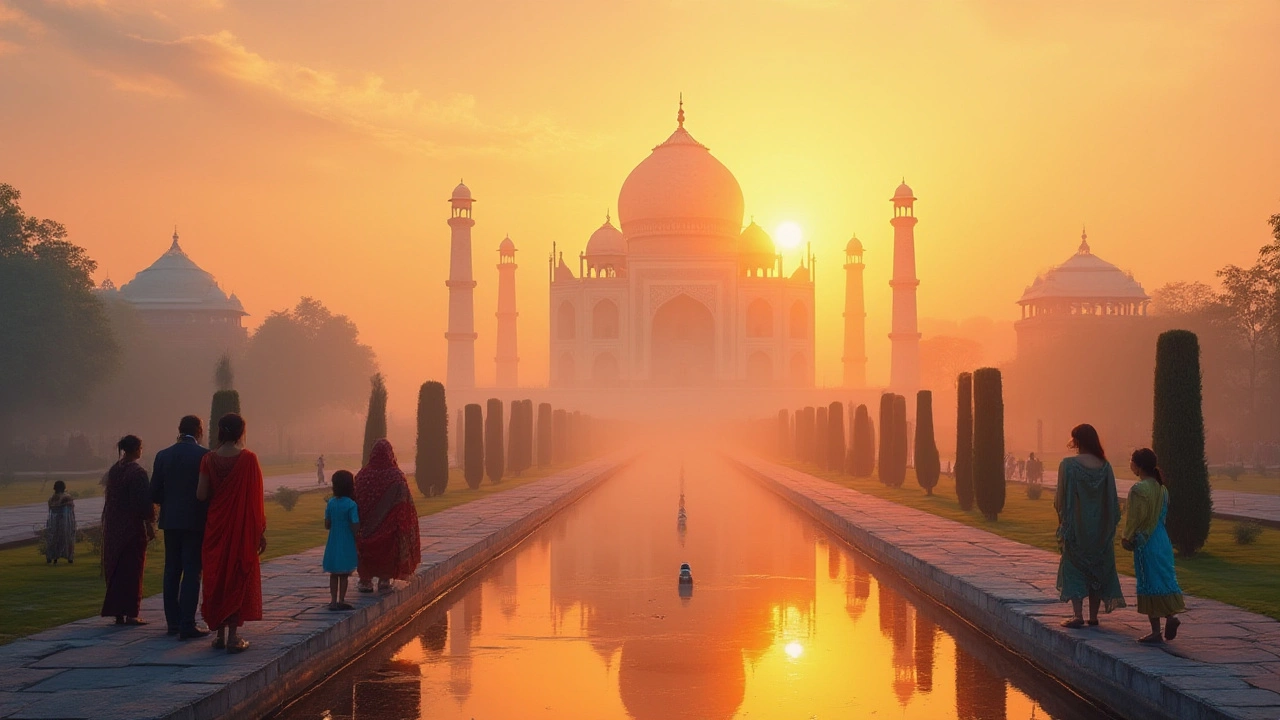
Get the ultimate guide to the best month for visiting the Taj Mahal. Learn about Agra's weather, crowd levels, photography tips, and how to enjoy India’s most iconic landmark.
When planning a trip to Agra, knowing the local climate saves you from surprise rainstorms or scorching heat. Agra weather, the typical climate patterns in Agra, India. Also called Agra climate, it shapes everything from sightseeing schedules to packing lists.
Agra itself sits on the fertile plains of North India, so its weather shares traits with the broader Agra, a historic city famous for the Taj Mahal. The iconic marble monument, the Taj Mahal, a UNESCO World Heritage site that draws millions of visitors, reacts directly to seasonal shifts – misty mornings in winter, dazzling sunsets in spring, and occasional haze in summer. Understanding these patterns helps you decide when to book tickets, choose the right outfit, and avoid crowds. In short, Agra weather influences travel planning, photography chances, and even health safety during your visit.
Winter (December – February) brings mild days around 15‑20 °C and chilly nights that can dip below 5 °C. This is the most comfortable window for exploring the Taj Mahal’s marble façade without sweat draining your energy. Clear skies also mean crisp photographs, especially early‑morning light that highlights the monument’s reflection in the Yamuna River. Spring (March – April) sees temperatures climb to 25‑30 °C, with a burst of fragrant jacaranda blossoms along the streets; it’s a sweet spot for tourists who want warmth without the peak‑summer humidity.
Summer (May – June) pushes daytime highs above 40 °C. The heat intensifies the city’s dust, creating a hazy veil that can dull the Taj’s sparkle. If you travel then, schedule indoor breaks, hydrate constantly, and wear breathable fabrics. Monsoon season (July – September) delivers occasional showers that refresh the air but can also make streets slippery and disrupt outdoor plans. Pack a compact raincoat and waterproof shoes; the rains often bring a dramatic sky that photographers love.
Autumn (October – November) returns to pleasant 20‑28 °C weather, low humidity, and a gentler breeze. This period aligns with the cultural festivals of the Golden Triangle, making it a prime time to weave Agra into a larger itinerary. The Golden Triangle, the popular travel loop covering Delhi, Agra and Jaipur benefits from stable weather, so you can comfortably move between sites without fearing sudden downpours or extreme heat. Knowing which season you’re in lets you match activities – sunrise at the Taj, night‑market strolls, or desert‑edge excursions – to the most favorable conditions.
Beyond temperature, consider air quality and safety. In winter, the city’s particulate matter can rise, so a light mask adds comfort for sensitive travelers. In summer, heat‑related fatigue is a real risk, especially for seniors or young children; schedule shade breaks and carry electrolytes. These practical tips keep you healthy while you soak up Agra’s heritage.
Now that you’ve got a clear picture of how Agra weather shapes every part of the visit – from the Taj Mahal’s glow to the flow of the Golden Triangle route – the articles below will dive deeper into specific travel advice, safety guidelines, and seasonal packing lists. Explore the collection to fine‑tune your itinerary and make the most of every climate‑driven moment in Agra.

Get the ultimate guide to the best month for visiting the Taj Mahal. Learn about Agra's weather, crowd levels, photography tips, and how to enjoy India’s most iconic landmark.